Russian fleet after Peter I. Part I. The reign of Catherine I and Peter II
В stories Russian fleet the period from the death of Peter the Great to the coming to the throne of Catherine II is a kind of “white spot”. Navy historians did not indulge him with their attention. However, the events of that time in the history of the fleet are quite interesting.
According to the decree of Peter I, signed by him in 1714 year, as, by the way, under the original Russian law, the mother widow with children became the guardian of the heirs of minors, but had no right to inherit the throne. No less confusing by the will of the king himself was the question of the children, the heirs of the monarch. By a decree of 5 in February, 1722, the emperor abolished the two inheritance orders that had previously operated (by will and conciliar election), and replaced them with the appointment of a successor at the personal discretion of the reigning sovereign. Peter the Great died 28 in January 1725. Having lost his speech, he managed to write a losing hand only two words: "Give it all ..." He could not finish the rest, and his indication of the heir to the throne went to his grave.
However, if you carefully read the decree of 1722 of the year, then you can see in it the order of inheritance not only according to the will, but also according to the law: when, in the absence of sons, power is transferred to the eldest of the daughters. She was Anna Petrovna, who, having married the Duke of Golshtinsky in 1724, refused the rights to the Russian throne for her and her future offspring under oath. It seemed that the legal right of inheritance had to go to the second daughter - Elizabeth. However, after the death of the emperor, the half-underground opposition in the person of the princes Golitsyn, Dolgorukikh, Repnin openly acted. She relied on the young Peter Alekseevich - the grandson of Peter I, the son of the executed Tsarevich Alexei. The supporters of Tsar Ekaterina’s wife — A. Menshikov, P. Yaguzhinsky, P. Tolstoy — wanted to proclaim her as the empress. Then the opposition put forward a sly proposal: to enthrone Peter Alekseevich, but before his coming of age, let Catherine and the Senate rule. Resolute showed Menshikov. He led the loyal palace to the Empress of the Preobrazhensky and Semenov regiments. So, for the first time, these regiments acted as political, not combat, forces.
By the way, the conflict between the adherents of Peter Alekseevich and Catherine marked the beginning of an extremely peculiar period in the history of Russia from 1725 to 1762. - a series of palace coups. During this period, the person on the throne was changed mainly by women, who got there not on the basis of the procedures established by law or custom, but by chance, as a result of court intrigues and active actions of the imperial guard.
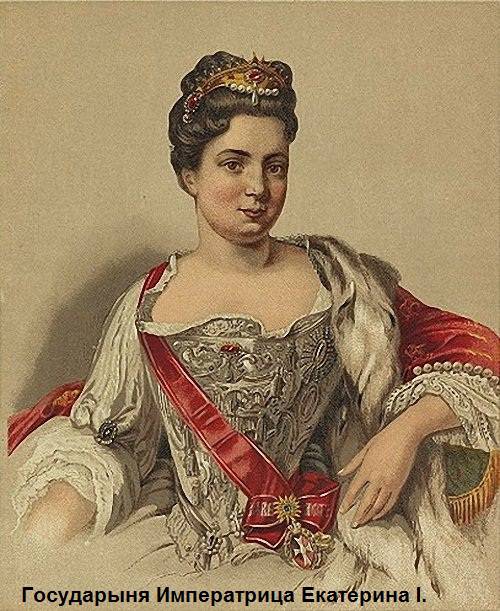
28 January 1725, Empress Catherine I, ascended the Russian throne, apparently should not list all the inheritance that she inherited from her late husband. Among other things, Peter the Great left a powerful army and a strong fleet to posterity and the Fatherland. Only the Baltic Fleet numbered about 100 pennants: 34 battleships armed with 50-96 cannons, 9 frigates that had onboard from 30 to 32 guns, other warships. In addition, the building was still 40 ships. The Russian fleet had its bases: Kronstadt - the fortified port and fortress, Revel - the harbor, St. Petersburg - the admiralty with the shipyard and workshops, Astrakhan - the admiralty. The naval commanders included 15 flagships, 42 captains of various ranks, 119 lieutenant commanders and lieutenants. At the same time, most of it is Russian. Of the 227 foreigners, only 7 was in command positions. And although the local naval specialists constituted the majority, by that time there was a lack of good navigators, and in shipbuilding, in secondary craftsmen. No wonder Peter planned to organize an educational institution that trained shipbuilders.
Catherine began to rule, relying on the same people and the same institutions that operated under Peter. At the beginning of 1725, her government reduced the size of taxes and forgave part of the arrears, returned from the conclusions and references almost all those punished by the late emperor, instituted the order of St. Alexander Nevsky, conceived by Peter, and finally decided to organize the Academy of Sciences. We must not forget that in the reign of Catherine I, in pursuance of the deathbed will of Peter the Great, the First Kamchatka Expedition began, headed by V. Bering and A. Chirikov.
Many historians tend to call the time of the reign of Catherine I the beginning of the era of the reign of the former favorite of Peter - Menshikov, who for many of the sins of the state was saved from death by only Peter's death. Having become the complete arbiter of affairs, using the confidence of the empress, Menshikov first of all decided to deal with the opposition. Dissension began in the Senate. P. Tolstoy where flattery, where the threat managed to extinguish feuds. But the altercation led to the establishment in 1726 of the Supreme Privy Council, which stood above the Senate, from which the prosecutor general was "taken away". The Senate began to be called instead of "governing" "high", having come down to a degree equal to military, foreign, and maritime. "For state-important affairs" was created the Supreme Privy Council, which consisted of six people: A. Menshikov, A. Osterman, F. Apraksin, G. Golovkin D. Golitsyn and P. Tolstoy. The Council assumed the role of a legislative institution, and without discussing it, the Empress could not issue a single decree. With the establishment of this authority, Menshikov, as head of the military administration, got rid of senate control. In order not to load himself with routine work, His Serene Highness Prince organized the “Commission of Generals and Flagships”, whose duty was to take care of all the affairs of the army and navy. The entire taxable part in each province was entrusted to the governors, for which purpose they were assisted by one staff officer.
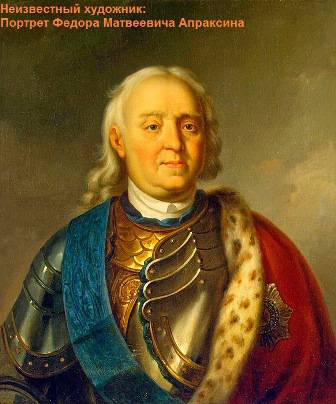
Behind the ostentatious state activity was hiding the rest "on its laurels." Not without reason, historians of the past have argued that the once "tireless, talented and energetic performers of the brilliant plans of Peter, now turned into ordinary mortals or depressed by old age, or preferring their own interests to the good of the Motherland." Menshikov especially excelled in this. Russia tried to maintain peaceful relations with Poland, but the prince’s actions in Kurland were almost brought to rupture with her. The fact is that the last ruler of Courland, the duke Ferdinand, was already 70 by that time, and he had no children. Menshikov, who entered the territory of Courland with an army, made his claim to the vacant position. But even with a demonstration of power, the Courlanders refused to elect him to the dukes. Not vainly honored, the ambitious courtier returned to St. Petersburg.
So, the actual power in the reign of Catherine was concentrated in Menshikov and the Supreme Privy Council. The Empress was quite satisfied with the role of the first mistress of Tsarskoye Selo, fully trusting in matters of government to her advisers. She was interested only in the affairs of the fleet: Peter’s love for the sea also touched her.
It is worth noting that the negative trends of the era have infected fleet leaders. The once energetic and experienced President of the Admiralty Board, General-Admiral Apraksin, as one of his contemporaries wrote, "began to take great care of maintaining his importance at court, and therefore he was less concerned about the benefits of the fleet." His associate and vice president of the Admiralty Collegium, Admiral Cornelius Cruys, "having grown old physically and morally, rather constrained the activities of his subordinates rather than guided them." In the Marine College, in contrast to the Petrine era, preference was given not to business qualities, but to patronage and connections. In the spring of 1726 of the year, for example, the Admiralty Board was appointed adviser to Captain 3 of rank I. Sheremetev and Lieutenant Prince M. Golitsyn, who had not distinguished themselves before with any special merits.
Nevertheless, the state spring instituted by Peter the Great continued to operate. In St. Petersburg, in 1725, newly built battleships "Do not touch me" and "Narva", created by talented shipbuilders Richard Brown and Gabriel Menshikov, came to water. They, in the reign of Catherine I, laid the 54-gun ships Vyborg and Novaya Nadezhda in the capital shipyard, and the new 100-gun battleship, which received the name Peter I and II after the death of Catherine I, was being built.
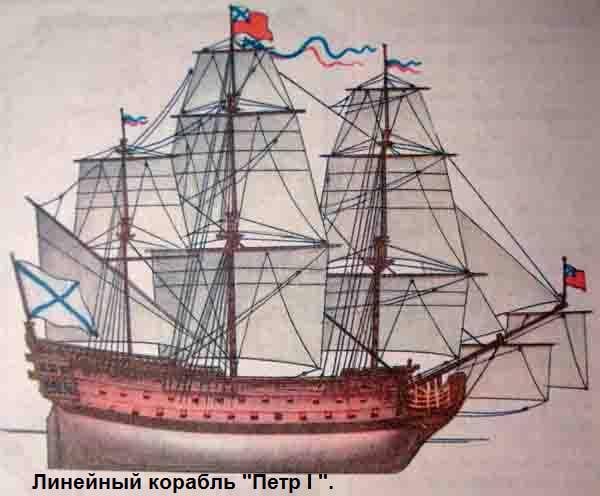
External relations of that period were reduced to the struggle against the Ottomans in Dagestan and Georgia. However, in the west of the state was restless. Catherine I wanted to return to her son-in-law, Anna Petrovna's husband, the Duke of Golshtinsky, the Schleswig region, taken away by the Danes, which could strengthen the Ducal rights to the Swedish crown. But the Duke of Hesse, whom England supported, claimed it. London guaranteed Denmark with a favorable outcome possession of Schleswig. Therefore, some tension arose between Russia, Denmark, Sweden and England.
In the 1725, Apraksin launched the Baltic Sea for cruising the 15 battleships and the 3 frigate. The campaign has done without any clashes with hostile states. However, the management of the ships was so unsatisfactory that, as Apraksin himself recalled, some ships could not even keep order. Damage to the courts revealed a weakness of the spars and poor quality rigging. In order to put the ships in order for the next campaign, despite the fact that the financial position of the maritime administration was deplorable, General-Admiral Apraksin allocated two thousand rubles from his personal funds to strengthen the fleet. It did not go unnoticed. In the spring of the preparation of the Russian fleet's 1726, Albion was so alarmed that he sent a ship under the command of Admiral Roger to Revel 22. They were joined by seven Danish ships that stood at the island of Nargen until the beginning of autumn. Both those and others interfered with the navigation of Russian ships, but did not undertake military actions. In their anticipation, Kronstadt and Revel prepared for defense: in the first fleet they stood all summer in the roadstead, from the second ships went out to cruise.
The English king, in his letter to Catherine I, explained the actions of his fleet: he was sent "not for the sake of any quarrel or non-alliance", but solely out of a desire to maintain peaceful relations in the Baltic, which, in the opinion of the British, could be broken by reinforced Russian naval armaments. In a response letter, the Empress drew the attention of the English monarch to the fact that his prohibition could not prevent the Russian fleet from sailing into the sea, and just as she does not prescribe the laws to others, she herself does not intend to accept them from anyone, "like autocracy and absolute sovereign, independent no one except God. " This firm reply of the Empress showed England the ineffectiveness of the threats. London did not dare to declare war, because there were no obvious reasons for the conflict. The tension that was created ended peacefully with both England and its allies.
In the 1725 year, with the commercial purpose to Spain under the command of the captain 3 rank Ivan Koshelev went the ship "Devonshire" and two frigates. This visit was prepared by Peter I to attract Spanish merchants to trade with Russia. The head of the detachment Koshelev delivered domestic samples of goods to Spain, established business relations with foreign merchants, who sent their trading agents to Russia for a detailed study of the Russian market. The emissaries of Catherine I stayed in a distant country, which Russian sailors visited for the first time, almost a year. In April 1726, they safely returned home to Revel. Koshelev for a successful voyage "to others not to sample" was fired through the rank of captain of 1 rank. In addition, the following year he was appointed director of the Moscow Admiralty office.
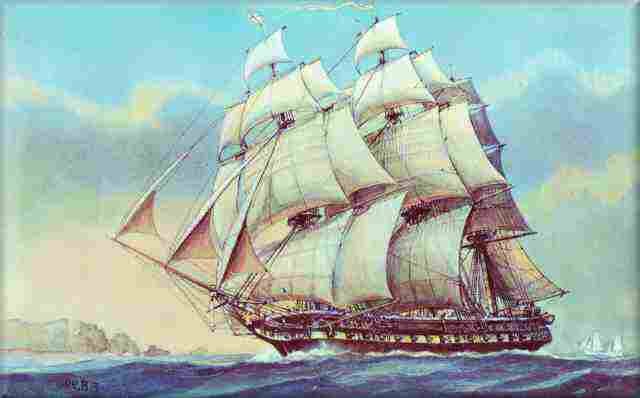
At about the same time and for the same purpose, the Gukor and the frigate were sent to France. When this campaign was being prepared, Catherine I began to be convinced that it was unprofitable, and "overland from both powers, the goods go enough." The empress still insisted on her own, ordering to send ships both for training the crew and "for the hearing of the people", that Russian ships go to the "French ports".
For the sake of expanding foreign maritime trade, the empress canceled the decree of Peter I, which was ordered to bring goods to Arkhangelsk, produced only in the Dvina basin, and from other places goods destined for sale abroad should be shipped through St. Petersburg. By her decree, Catherine I gave Arkhangelsk the right to trade goods and products with foreign countries, regardless of where they were produced. Then she tried to create a Russian whaling industry, for which in Arkhangelsk, with the support of the Empress, a special company was formed, which had three whaling ships.
Peter the Great, having left life, did not leave much money in the treasury. With him, there was austerity in everything. However, the king did not spare funds for innovations in all sectors of the vast economy. And, of course, to the fleet. A strict schedule of costs allowed, even with minimal funds in the reign of Catherine I, to conduct more or less normal maritime activities. Ships and ships were built, armed, went to sea. Construction work continued in Rogervik and in Kronstadt, where capital construction of canals, docks and harbors continued under the direction of the main commander of the fortress and port, Admiral P. Sievers. In Astrakhan, a harbor was also built for the wintering of ships and vessels of the Caspian Flotilla. In keeping with the will of Peter I, the empress strictly followed the preservation and use of the ship's forests. To this end, on her instructions, several experts, "forest knowledgers", were invited from Germany. It should be noted that it was precisely at that time that engineering colonel I. Lyuberas, the builder of the fortress on the island of Nargen, carried out hydrographic works and compiled a detailed map of the Gulf of Finland. The same work was carried out in the Caspian by Lieutenant-Captain F. Soimonov.
6 May 1727, Catherine I passed away. According to her testament, the royal throne, not without pressure from Menshikov, passed on to the minor grandson of Peter the Great - Peter II.
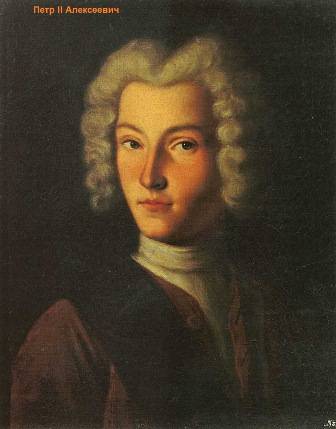
Peter Alekseevich, the grandson of Peter the Great and the son of the executed Tsarevich Alexei, ascended the throne of May 7 of the year 1727. The monarch was then 11 years old. The wicked nobleman A. Menshikov accomplished this "landing on the throne". As soon as the boy was declared emperor, the brilliant Alexander Danilovich took the young sovereign to his house on Vasilyevsky Island and two weeks later, on May 25, betrothed him with his daughter Maria. True, for the enthronement of Peter II, His Serene Highness "bore" the title of full admiral, and six days later, Generalissimo. The further education of the minor emperor Menshikov laid on Vice-Chancellor Andrei Ivanovich Osterman, the former private secretary of Admiral K. Cruys.
Seeing the open unceremoniousness of Menshikov in the struggle for closeness to the throne, the conservative opposition headed by the princes Dolgoruky and the Golitsins spoke out. The former, acting through the favorite of Peter Alekseevich, the young prince Ivan Alekseevich Dolgorukov, who inspired the boy-king to overthrow Menshikov, still achieved imperial wrath. Menshikov arrested 8 of September 1727 of the year and, having deprived "the ranks and cavalry", exiled Ranenburg to the Ryazan estate. But from there he remained powerful. Over the temporary worker, a new court was held, in which, according to A. Pushkin, once the “half-sovereign lord” was already exiled to Tobolsk Territory, to Berezov, where on October 22 on October 1729 his life full of exploits and sins ended.
After the fall of Menshikov, the location of Peter Alekseevich was seized by Dolgoruky. However, his teacher, A. Osterman, in general, who did not contradict the intrigues of the old Moscow aristocracy, enjoyed great respect from him. At the beginning of 1728, Peter Alekseevich went to Moscow to be crowned. More northern capital did not see him. His grandmother Evdokia Lopukhina, who was the first wife of Peter the Great, returned from the Ladoga monastery to the white-stone monastery. When 9 arrived in Moscow on February, the young monarch appeared at a meeting of the Supreme Privy Council, but “he did not deign to sit in his place, but, standing, announced that he wanted her majesty, his grandmother, in her high dignity to be kept in all pleasure” . This was already a clear demonstrative attack on the supporters of the reforms initiated by Peter the Great. The too-strong opposition at the time gained the upper hand. In January 1728, the yard left Petersburg and moved to Moscow. Historian F. Veselago noted that government officials had practically forgotten the fleet, and only Osterman, perhaps, had “sympathy for him”.
F. Apraksin, who headed the Admiralty Board and recently commanded the Kronstadt flotilla, stepped back from the naval affairs "for old age" and also moved to Moscow, where he died in November
1728 of the year, having survived his like-minded and assistant admiral K. Cruys, who passed away in the summer of 1727, for several months.
The maritime administration passed into the hands of an experienced sailor of the Peter’s school of admiral Pyotr Ivanovich Sivere, who had the honor of sailing near Peter I, performing the tasks of the emperor, being the chief commander of the Kronstadt port and its builder. Contemporaries noted that Sivere was an energetic man, knowledgeable, but at the same time he had a difficult, unsociable character. Therefore, he was constantly at odds with members of the Admiralty Colleges. Yes, and it was because of what have a "unsociable character."
Leaving Petersburg, the courtiers and high-ranking officials seemed to have forgotten about the fleet, which, without financial support, was heading for decay, losing its former meaning. The amount equal to 1,4 million rubles allocated for its maintenance was allocated with such underpayments that in 1729 year they exceeded 1,5 million rubles. Sivere agreed that in order to get out of this catastrophic situation, he began to petition for a reduction in the allocated funds for 200 thousand rubles, so that she would be released in full and on time. The request of the Admiralty Colleges was respected, they even thanked the members of the Collegium for the care of the fleet, but continued to allocate the reduced amount with the same non-punctuality.
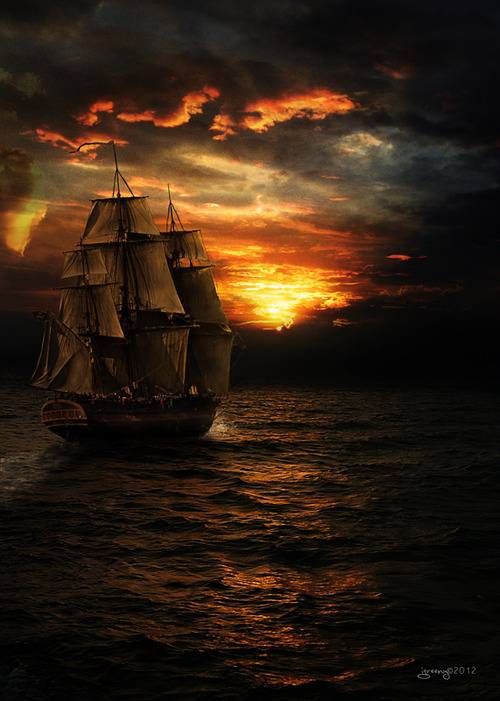
In the spring of 1728 of the year, in order to save and maintain the fleet's ships in good repair, the Supreme Privy Council decided that the battleships and frigates should be kept “ready for armament and march”, and while supplies and other supplies necessary for sailing “wait for ". At the same time they decided, for cruising and the necessary training of crews, to build five ships of lower rank, "but not to withdraw at sea without a decree." Two frigates and two flutes were ordered to be sent to Arkhangelsk, and another pair of frigates was sent to cruise, but not further than Revel. The activity of the fleet from 1727 to 1730 a year was practically limited to these voyages. During this period, the fleet was replenished with almost one galleys, which were built before the 80 pennants. And although in those years they launched five battleships and one frigate, they all began to be built during the life of Peter the Great.
A sign of the decline of the navy was the frequent transition of naval officers to other services. The testimony of the Swedish envoy, who in the autumn of 1728 of the year, responding with praise about the Russian army, emphasized in his report to the government that the Russian fleet was greatly reduced, the old ships were all rotten and no more than five ships-of-the-line ships could be built; very weak. " In the admiralty, these facts do not bother anyone.
By the way, it was during the reign of Peter II that foreign ambassadors noted that everything in Russia was in terrible disorder. In November, 1729, now Dolgoruky decided to intermarry with the juvenile emperor, who was betrothed to Princess Ekaterina Dolgoruky. But fate was unfavorable to them: at the beginning of 1730, Peter II fell ill with smallpox and died on January 19. With his demise, the Romanovs male line was cut short.
Sources:
Chernyshev A. The Great Battles of the Russian Sailing Fleet. M .: Yauza, Eksmo. 2010. C.58-67.
Veselago F. Brief history of the Russian fleet. M .: Voenmorizdat, 1939. C.57-78.
Arsenyev V. Fleet in the time of Catherine I // Sea collection. 1995. No.7. C. 75-79.
Berezovsky N. Russian Imperial Navy. 1696-1917. M .: Russian world, 1996. C.81-89.
Karpov A., Kogan V. Azov fleet and flotillas. Taganrog: Sphinx, 1994. C.73-77.
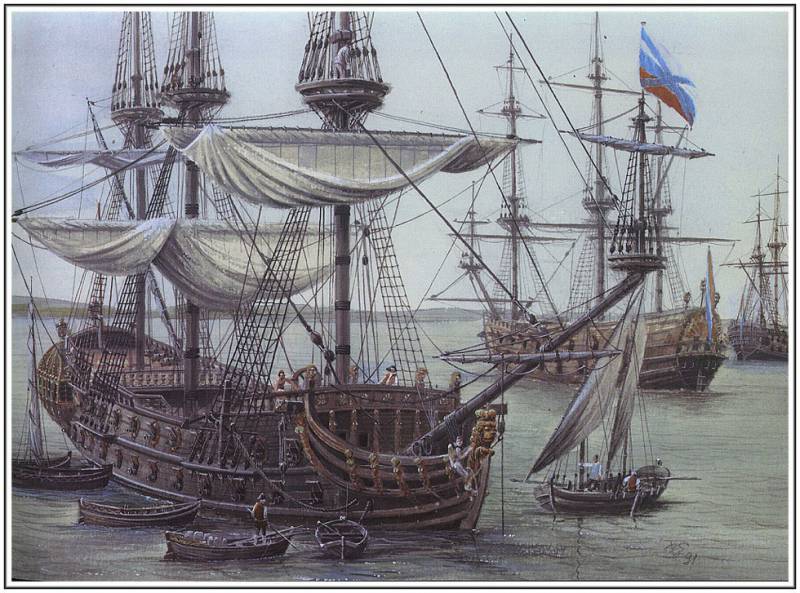
Information